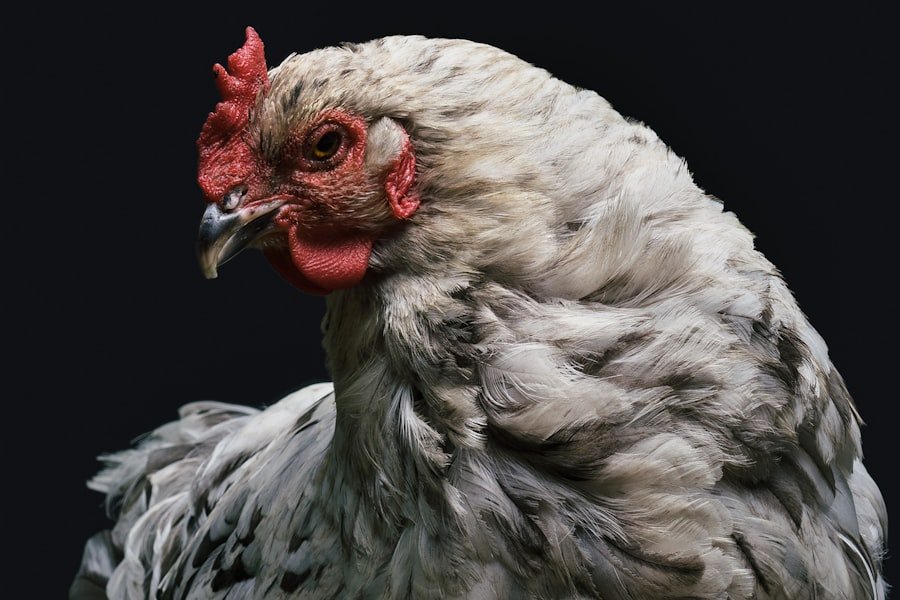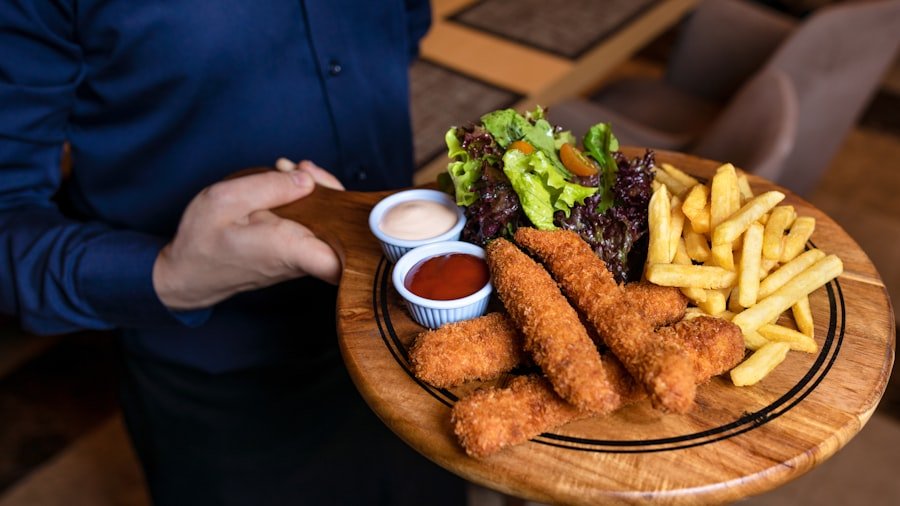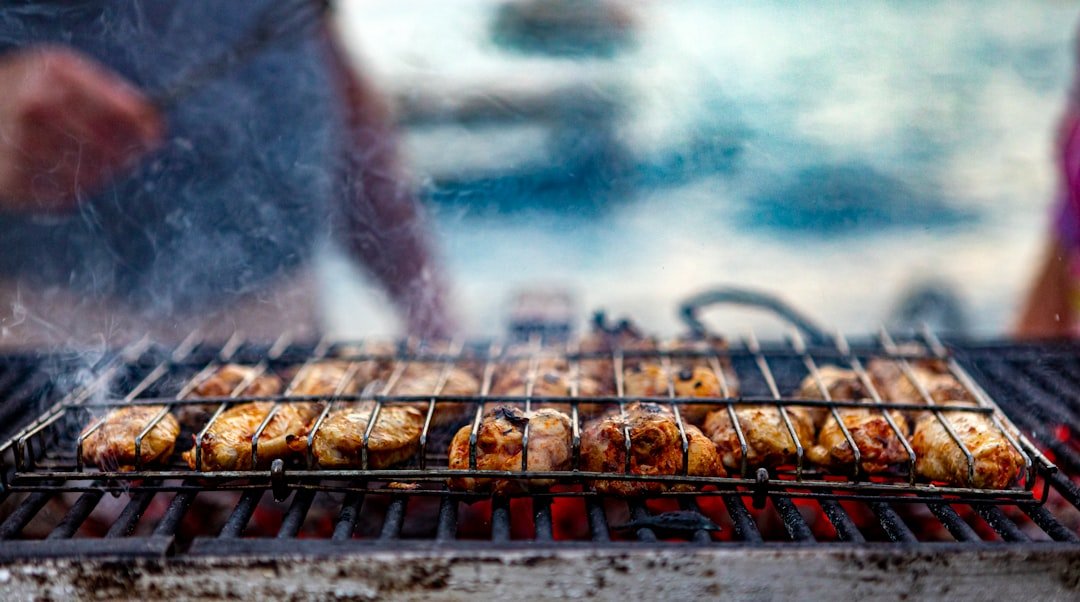Timing is critical when grilling chicken wings to achieve optimal results. Proper timing ensures that the wings are thoroughly cooked, juicy, and flavorful, while avoiding overcooking and dryness. Precision is necessary, as chicken wings can quickly become charred and tough if left on the grill for too long.
Conversely, undercooking may result in insufficient flavor development and potential food safety risks. Understanding the correct timing for grilling chicken wings is essential for serving them hot and fresh, particularly when hosting gatherings or barbecues. Proper timing allows for coordination with other grilled items, such as burgers, hot dogs, and vegetables, to create a well-organized meal.
Mastering the timing of grilling chicken wings is fundamental to consistently producing delicious and satisfying results.
Key Takeaways
- Timing is crucial in grilling chicken wings to ensure they are cooked to perfection and not overdone.
- Understanding the cooking process for chicken wings, including marinating, flipping, and basting, is essential for achieving the best results.
- Tips for achieving the perfect grilled chicken wings include using indirect heat, preheating the grill, and avoiding overcrowding the grill.
- Determining when chicken wings are done involves checking for an internal temperature of 165°F and ensuring they are golden brown and crispy.
- Factors such as wing size, grill temperature, and marinade thickness can affect grilling time for chicken wings and should be taken into consideration.
- Different grilling methods, such as direct heat, indirect heat, and using a smoker, may require adjusting timing to achieve the desired level of doneness.
- Serving and enjoying perfectly grilled chicken wings involves pairing them with delicious sauces, sides, and beverages for a satisfying meal.
Understanding the Cooking Process for Chicken Wings
Preparation is Key
The process begins with preparing the chicken wings by seasoning them with a marinade or dry rub to enhance their flavor. This step is crucial in adding depth and complexity to the wings.
Cooking with Care
Once seasoned, the wings are placed on a preheated grill, where they are cooked over direct heat. It’s vital to monitor the wings closely during the cooking process, as they can quickly become charred if left unattended. Regular turning is necessary to ensure even cooking and to prevent the wings from sticking to the grill grates.
Timing is Everything
The cooking process typically takes around 20-30 minutes, depending on the heat of the grill and the size of the wings. It’s essential to keep an eye on the wings and adjust the heat as needed to prevent them from burning or becoming overcooked. Once the wings reach an internal temperature of 165°F, they are ready to be removed from the grill and served.
Tips for Achieving the Perfect Grilled Chicken Wings

Achieving the perfect grilled chicken wings requires attention to detail and a few key tips to ensure success. First, it’s important to properly prepare the chicken wings by removing any excess moisture with paper towels before seasoning them with a marinade or dry rub. This helps the seasoning adhere to the wings and creates a crispy exterior when grilled.
Additionally, preheating the grill is essential for achieving perfectly grilled chicken wings. A hot grill ensures that the wings cook evenly and develop a delicious charred exterior. Another tip for achieving the perfect grilled chicken wings is to use a two-zone grilling method.
This involves creating a hot zone and a cooler zone on the grill, allowing you to sear the wings over direct heat and then move them to the cooler side to finish cooking through without burning. It’s also important to monitor the internal temperature of the wings using a meat thermometer to ensure they reach 165°F before removing them from the grill. Finally, allowing the wings to rest for a few minutes before serving helps redistribute their juices and ensures they are juicy and flavorful.
By following these tips, you can achieve perfectly grilled chicken wings that are sure to impress your guests.
How to Determine When Chicken Wings are Done
| Doneness Test | Description |
|---|---|
| Internal Temperature | Check that the internal temperature of the chicken wings reaches 165°F (74°C) using a meat thermometer. |
| Visual Inspection | Look for golden brown color and crispy texture on the outside of the chicken wings. |
| Juices Run Clear | Pierce the thickest part of the wing and ensure that the juices run clear, indicating that the wings are fully cooked. |
Determining when chicken wings are done requires attention to detail and an understanding of the signs of doneness. One of the most reliable methods for determining when chicken wings are done is by using a meat thermometer to check their internal temperature. The wings should reach an internal temperature of 165°F before they are considered safe to eat.
This ensures that any harmful bacteria present in the chicken wings are killed, reducing the risk of foodborne illness. In addition to using a meat thermometer, you can also check for visual cues that indicate the wings are done. Fully cooked chicken wings will have a crispy and golden-brown exterior, with clear juices running from the meat when pierced with a fork.
The meat should also pull away easily from the bone, indicating that it is tender and fully cooked through. By using a combination of these methods, you can confidently determine when chicken wings are done and ready to be removed from the grill.
Factors that Affect Grilling Time for Chicken Wings
Several factors can affect the grilling time for chicken wings, making it important to consider these variables when preparing to grill. The size of the chicken wings plays a significant role in determining their grilling time. Larger wings will require more time to cook through, while smaller wings will cook more quickly.
Additionally, the heat of the grill and the cooking method used can impact grilling time. A hotter grill will cook the wings more quickly, while a cooler grill will require more time. The presence of bones in the chicken wings can also affect grilling time, as they can slow down the cooking process.
It’s important to consider these factors when planning your grilling time to ensure that the chicken wings are cooked through and ready to be served at the desired time. By taking these variables into account, you can adjust your grilling time accordingly and achieve perfectly grilled chicken wings.
Adjusting Timing for Different Grilling Methods

Charcoal Grilling: Factoring in Heating Time
When using a charcoal grill, it’s essential to allow extra time for the coals to reach the desired temperature before placing the chicken wings on the grill. This initial heating period should be factored into your overall grilling time to ensure the wings cook evenly and develop a delicious charred exterior.
Gas Grilling: Precise Temperature Control
In contrast, gas grills offer more precise control over the cooking temperature, allowing for more consistent grilling times. However, it’s crucial to closely monitor the heat and make adjustments as needed to prevent overcooking or burning the chicken wings.
Smoking and Indirect Grilling: Longer Cooking Times
When using a smoker or indirect grilling method, you’ll need to adjust your timing to allow for longer cooking times at lower temperatures. This approach requires patience, but the result is well worth the wait.
By understanding how different grilling methods impact timing, you can adjust your approach accordingly and achieve perfectly grilled chicken wings every time.
Serving and Enjoying Perfectly Grilled Chicken Wings
Once you have achieved perfectly grilled chicken wings, it’s time to serve and enjoy them with family and friends. When serving grilled chicken wings, it’s important to present them in an appealing manner, whether on a platter or individual plates. You can also pair them with a variety of dipping sauces or condiments to enhance their flavor and appeal.
When enjoying grilled chicken wings, it’s important to savor each bite and appreciate the effort that went into preparing them. Whether enjoying them as an appetizer or main course, take the time to appreciate their flavor and texture. Grilled chicken wings are best enjoyed with good company, so be sure to share them with friends and family for a memorable dining experience.
In conclusion, mastering the timing of grilling chicken wings is essential for achieving delicious and satisfying results. Understanding the cooking process, utilizing key tips, determining when they are done, considering factors that affect grilling time, adjusting timing for different grilling methods, and serving and enjoying perfectly grilled chicken wings all play crucial roles in achieving this culinary feat. With attention to detail and practice, you can become a master at grilling chicken wings that will impress your guests and leave them craving more.
For more tips on grilling chicken wings, check out this article on how to grill chicken wings. It provides step-by-step instructions and helpful tips for achieving perfectly grilled chicken wings every time.

